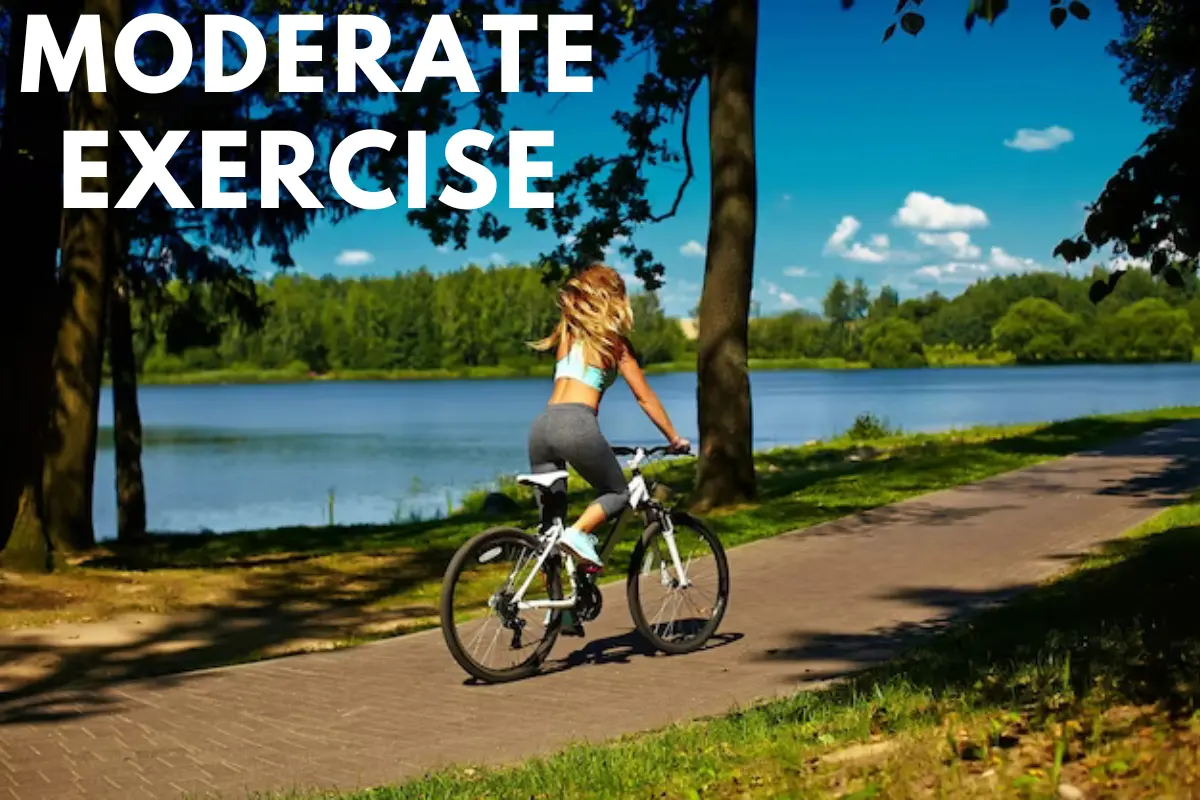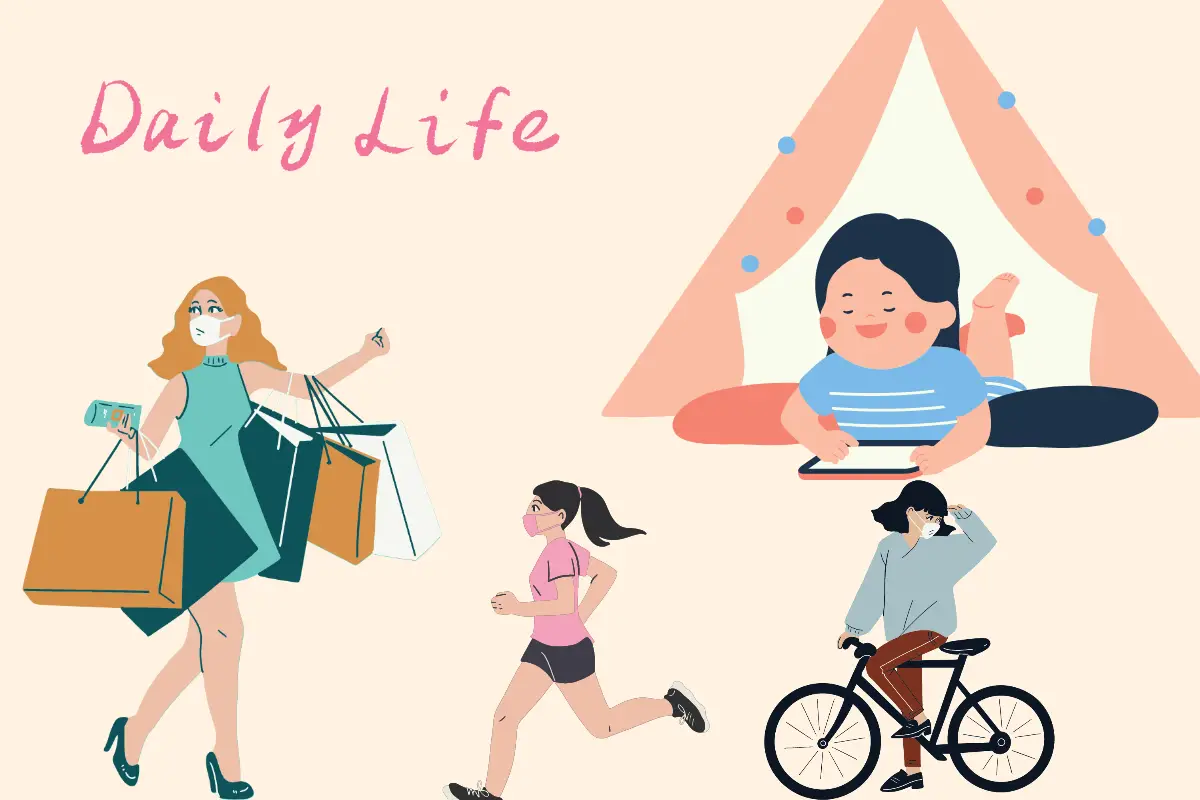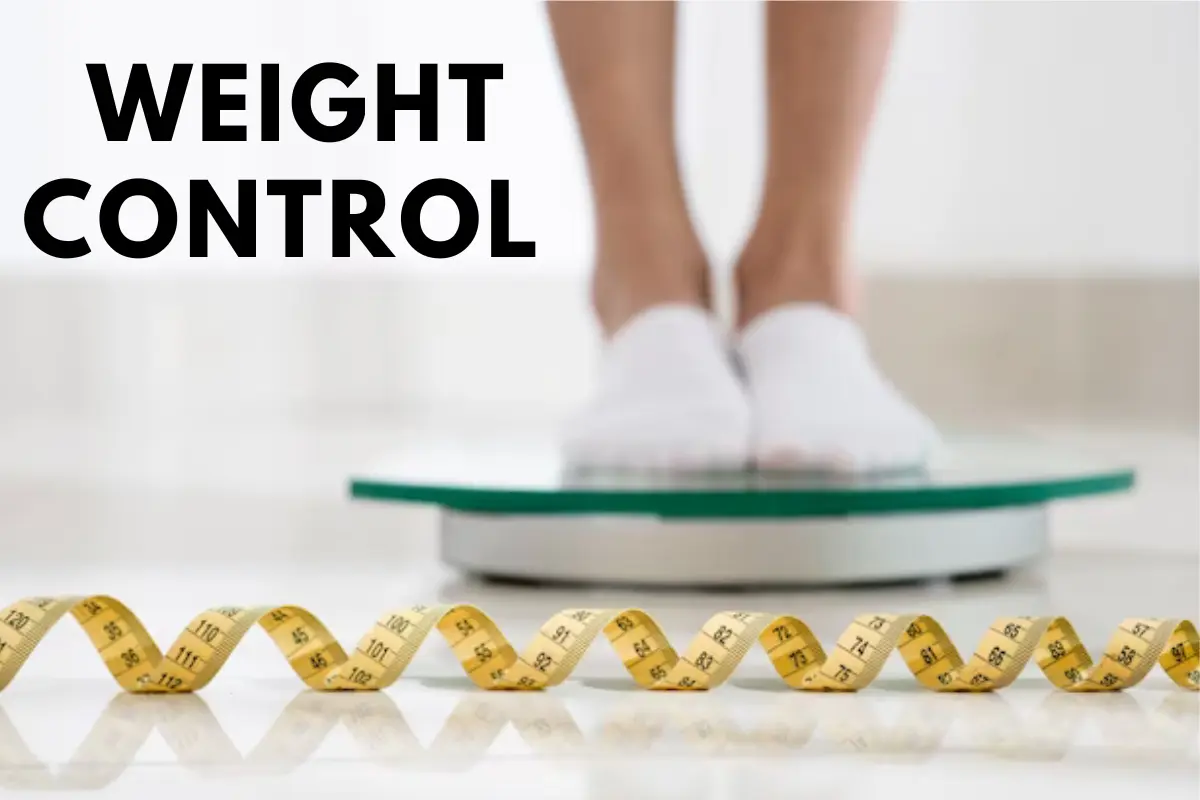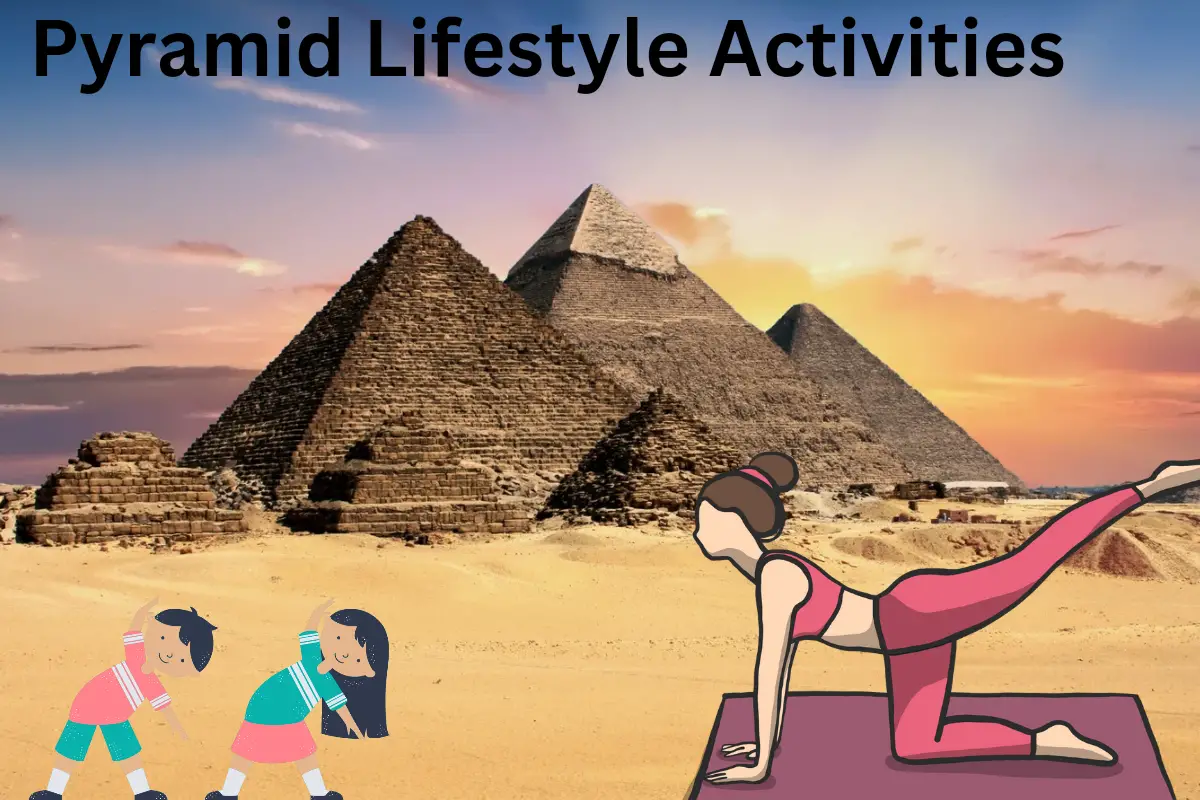Introduction
Get ready to fuel your success and ignite your active lifestyle with Physical Activity Pyramid! These powerful activities at the top of the pyramid will take your fitness journey to new heights. Are you ready to embrace the challenge and achieve greatness?
Physical Activity Pyramid are the pinnacle of physical fitness, offering a wide range of benefits for your overall well-being. These activities encompass everyday tasks and hobbies that keep you active and engaged throughout the day. From walking and gardening to dancing and playing sports, these activities not only promote physical health but also enhance mental clarity and emotional well-being.
What is Physical Activity Pyramid?
The Physical Activity Pyramid is a graphic model that depicts different levels of physical activity that are essential to maintain healthy life style. It’s analogue to something like food pyramids that suggest proper nutrition. The Physical Activity Pyramid consists of four or five levels which have the most essential activities on a bottom and the least on a top. Here’s a general breakdown:
Sedentary Activities (top of the pyramid):
Such activities constrained include extended sitting or screen time. Sedentary sports are people who contain minimum physical motion and are commonly executed at the same time as sitting or lying down. Examples encompass looking TV, the usage of the pc, reading, or playing video video games. These activities require little or no strength expenditure and are considered to be the least energetic form of activities. It’s crucial to stability sedentary activities with more lively ones to maintain a healthy life-style.
Activities with High Intensity
These types will be placed at the very top of the pyramid – they are high-intensity activities like competitive sport These should be exercises aiming at improving your strength and stamina.
Moderate Exercise:
Running, swimming, and biking are examples of moderate activities that fall just below high-intensity ones. They offer a balanced range of cardiorespiratory advantages.
 Low-Intensity Exercise
Low-Intensity Exercise
These include of exercises like yoga, walking, and modest gardening. They promote flexibility and offer mild movement. Low-intensity excercise refers to physical sports which might be mild on the body and don’t require loads of effort. It can consist of activities like walking, yoga, stretching, or light cycling. While low-depth workout may not be as severe as high-depth workouts, it nevertheless offers numerous fitness benefits and may be a awesome way to live lively and maintain usual nicely-being.
Activities of Daily Life (Base of the Pyramid):
The pyramid’s foundation is made up of lifestyle activities. You engage in these regular, unstructured activities as part of your routine, frequently without giving them a second thought.

Lifestyle Activities (optional):
This level could involve such specific activities as sports training, team sports or competition athletics. Lifestyle activities are optional activities that you can contain into your day by day habitual to steer a more healthy life-style. They can consist of such things as taking the steps instead of the elevator, parking farther away to get some extra steps in, or doing household chores like gardening or cleaning. These activities might not sense like conventional workout, but they nevertheless contribute to your overall bodily activity level and might make a tremendous impact for your health.
The Physical Activity Pyramid encourages a balanced physical activity practice among people where they will engage in activities from different levels of the pyramids for their overall health and well-being. This underscores the relevance of cutting down sedentary time and incorporating a mixture of various types of physical activity in the everyday life. It should be mentioned that the pyramid’s form and recommendations might differ according to a source or guideline.
Investigating lifestyle pursuits
Let’s now concentrate on lifestyle activities and why they are so crucial:
Daily Movement Is Important:
The motions you do in your daily life, such as taking the stairs or walking to work, are referred to as lifestyle activities. These small, seemingly insignificant things pile up and have a big impact on how active you are overall.
Reliable & Reliable:
Lifestyle activities are sustainable, in contrast to intense workouts, which might be difficult to maintain everyday. They are simple to include into your routine, increasing the likelihood that you’ll continue using them over time.
The Basis of Health:
A healthy, active lifestyle is built on lifestyle activities. They assist in preserving fundamental fitness levels, enhancing posture, and lowering the danger of developing chronic illnesses like obesity and heart disease.
Weight Control:
burning calories throughout the day, consistent participation in lifestyle activities can help with weight management. This can have a big impact on maintaining a healthy weight over time.
 Mental Health:
Mental Health:
Don’t undervalue the advantages of lifestyle choices for mental health. They can improve mood, lessen stress, and general well-being.
Pyramid Physical Activities Vedio tutorial:
https://youtu.be/CIW0uMF7U0A?si=damcywgEVOafTB3H
Create a Schedule:
Plan your days and weeks in advance. Use a calendar or planner to allocate time for work, personal commitments, and leisure activities.
- What is the purpose or goal of this schedule (e.g., daily routine, work, fitness)?
- How many hours do you want to allocate for this schedule?
- Do you have specific activities or tasks you want to include?
- Are there any time constraints or fixed appointments I should be aware of?
- Once I have this information, I can create a schedule tailored to your needs.
Communicate with loved ones
Communication to a Loved One is Crucial in Sustaining a Balanced Work and Life Relationship. Here are a few ways you can communicate with them:
 Share your schedule:
Share your schedule:
Inform Your Love Ones of Work Schedule. Let them know about any important schedules such as meetings, deadlines, or any other event that could bar your availability. In so doing, they will comprehend the nature of your workload, planning as they undertake their tasks.
Express Your Needs:
Tell them about what you require and anticipate regarding your working hours. Make it clear to your family and friends about the kind of support and time that you need from them. Discuss your past preferences in an open and transparent manner along with how they will assist you get there.
Plan Quality Time:
Schedule dedicated quality time with your loved ones. Whether it’s a weekly family dinner, a movie night, or a weekend outing, make sure to carve out time specifically for bonding and connecting with them. This shows that you value their presence and strengthens your relationships.
Listen and Be Present:
When spending time with your loved ones, practice active listening and be fully present. Put away distractions such as phones or laptops and give them your undivided attention. Engage in meaningful conversations and show genuine interest in their lives.
Seek Emotional Support:
And if you feel stuck up just call upon your loved ones who could really be there for you in case of emotional highs and lows. Let them feel what you’re feeling and try telling them about it, so that they can encourage you and comfort you. In some instances, talking helps to reduce the amount of stress.
Collaborate on Responsibilities:
Involve your loved ones in managing household responsibilities and tasks. Delegate and share the workload to ensure that everyone contributes and no one person feels burdened. This fosters a sense of teamwork and reduces individual stress.
Prioritize Self-Care:
Prioritize self-care for the sake of yourself. Here are some key points to remember:
- Set Boundaries: Establish clear boundaries to protect your time and energy. Learn to say no when necessary.
- Regular Rest: Be sure that your sleep is of good quality. Rest can help you handle challenges better.
- Healthy Lifestyle: Eat Right, Exercise Right and Drink More Water. Physical well being is connected with mental health.
- Mental Health: Set aside moments for your own mental health such as meditation, journaling or therapy, if needed.
- Enjoy Hobbies: Engage in activities you love. Hobbies and interests provide an excellent outlet for relaxation and creativity.
- Social Connections: Develop Relationships with Friends and Family. Being with friends constitutes self-care.
- Unplug: Practice breaks in order to minimize stress and increase mindfulness, when it comes to the technology use.
- Self-Compassion: Be kind to yourself. Be kind to yourself and do not criticize yourself.
- Me Time: Regularly schedule alone time to recharge and reflect.
- Learn to Relax: Explore relaxation techniques like deep breathing, progressive muscle relaxation, or a warm bath.
Unplug from Technology:
Set boundaries with technology by designating tech-free zones or specific times when you disconnect from emails and notifications to fully engage in personal Activities. Creating a schedule to unplug from technology can be a great way to prioritize mindfulness and reduce screen time. Here’s a sample schedule for unplugging:
Morning:
- 6:30 AM – Wake up and start your day with a mindfulness practice (meditation or deep breathing) instead of checking your phone.
- 7:00 AM – Enjoy a technology-free breakfast. Read a physical book or engage in face-to-face conversation.
 Work/School Hours:
Work/School Hours:
- 9:00 AM to 12:00 PM – Focus on work or school tasks without digital distractions. Use apps like website blockers if needed.
- 12:00 PM – Take a tech-free lunch break.
Afternoon:
- 1:00 PM to 3:00 PM – Continue with work or other responsibilities.
- 3:00 PM – A short break for a healthy snack and a tech-free activity like drawing or journaling.
Evening:
- 6:00 PM – Have a tech-free dinner with family or friends.
- 7:00 PM – Spend quality time with loved ones, engage in outdoor activities, or read a physical book.
- 9:00 PM – Begin winding down by dimming screens and avoiding electronic devices. Opt for reading a paper book or practicing relaxation techniques before sleep.
Before Bed:
- 9:30 PM – Unplug completely. Charge your devices outside the bedroom to resist late-night screen temptation.
- 10:00 PM – Go to bed for a restful night’s sleep.
Reflect and adjust
This is a very good mantra for personal growth and improvement reflect and adjust. Review your actions, decisions and experiences. Then, be willing to make adjustments and changes based on what you’ve learned to continually progress in life.Reflect and Adjust: Review your work-life balance regularly and make necessary modifications. Always be ready to adapt to new circumstances to ensure that you are always putting your well-being first.
Conclusion
Lifestyle activities may seem unremarkable in the overall scheme of physical exercise, yet they are the unsung heroes of health. They serve as the cornerstone on which all other forms of exercise can be constructed. The next time you decide to walk instead of drive or to use the stairs rather than the lift, keep in mind how much of an impact these seemingly insignificant lifestyle decisions are having on your general health and wellbeing. Accept them as an important component of your fitness path.
FAQs
What are the physical activity pyramids?
Physical activity pyramids are a visual representation of the recommended amounts and types of physical activities that provide health benefits. They offer a platform for people to understand and adopt different types of physical activity in their lifestyle.
What are the 4 types of activity in physical activity pyramid?
The four categories of activities in the physical activity pyramid include aerobic, strength and resistance training, flexibility exercises as well as lifestyle.
What are the benefits of the human pyramid?
The human pyramid, which is a physical activity that involves the participation of several individuals working in unison can help promote teamwork and coordination as well as strength and balance skills while also encouraging social interaction among participants.
How many types of activities are there?
There are generally three types of activities: aerobic workouts, strength and resistance training as well as flexibility exercises. Each type provides specific advantages in terms of total fitness and health.

